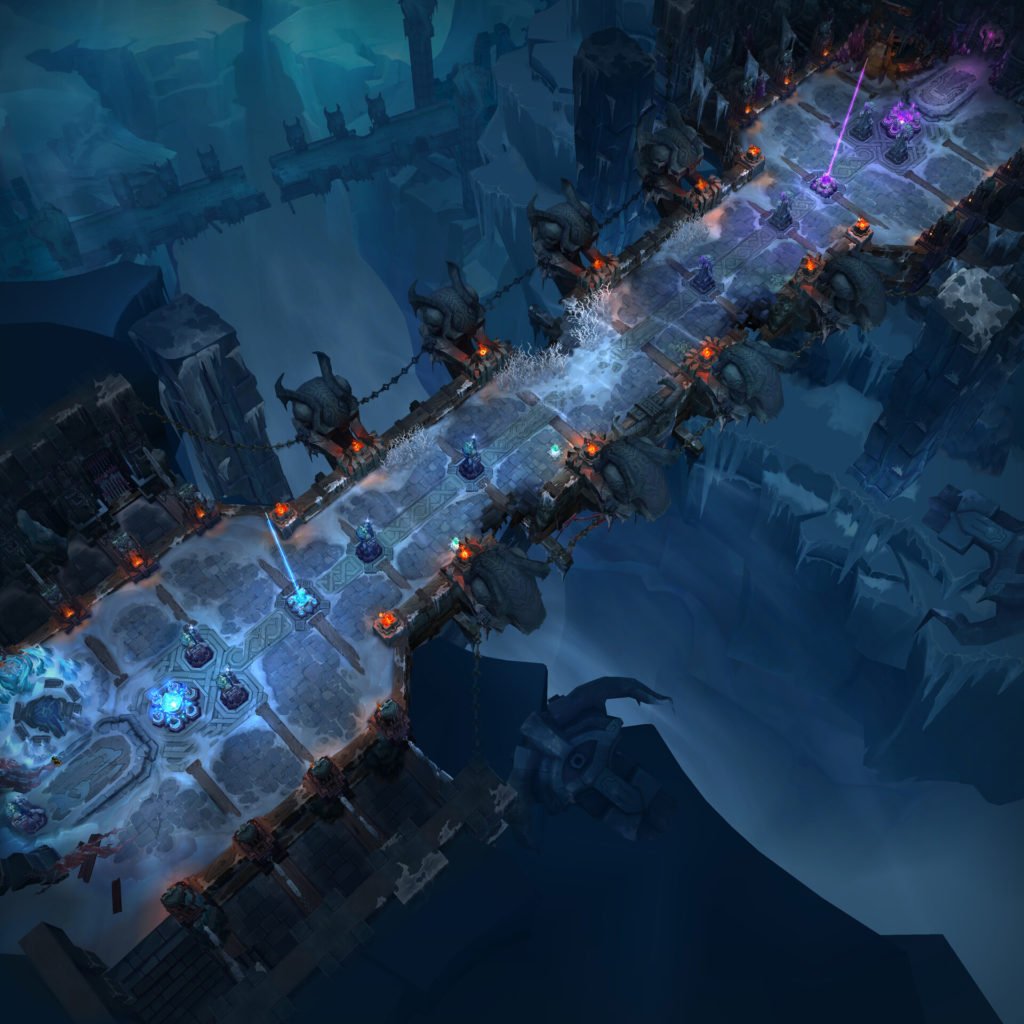If you’re just getting started betting on eSports, you’ll likely want to know how to understand a League of Legends match. League of Legends is one of the most popular eSports in the world and is played by over 100 million users every month. The 2016 League of Legends World Championship Tournament attracted nearly 400 million viewers across five weeks, with the finals alone bringing in 43 million viewers.
League of Legends is a multiplayer online battle arena video game that was developed by Riot Games for Microsoft Windows and macOS. The gameplay can seem complex for first-time viewers, but once you get the basics down, you’ll learn how to understand a League of Legends Match so you can start betting on teams and tournaments.
How to Understand a League of Legends Match: Gameplay
In League of Legends, players assume the role of what is called a “Champion.” Each champion has unique abilities and players use those champions to battle against a team of other players. The goal of the game is to destroy the opposing team’s “Nexus,” which is a structure that lies at the center of a base protected by defensive structures. While there are other forms of gameplay with different rules and objectives, this is the most common form of gameplay that you’ll see at an event.
At the start of a match, each champion starts off as a weak character. It’s up to players to help level up and increase the strength of their characters by accumulating items and experience throughout the duration of the game. The maximum level a champion can reach is level 18, and as players increase in level, they’re able to unlock their champions’ special abilities.
If a champion loses all of their health, they’re defeated but not eliminated. Instead, they return to their base after a certain amount of time has passed. Players start each match with a low amount of gold, and they can earn more gold in a number of different ways. They can kill minions or monsters (AI controlled), kill enemy players, destroy enemy structures, and use their unique champion abilities. Gold is used to buy in-game items that help with each champion’s abilities in a number of different ways.
There are two running games modes in League of Legends: Summoner’s Rift and Howling Abyss. These are the maps where the match occurs and players attempt to destroy their opponents by fighting through numerous defensive structures.
How to Understand a League of Legends Match: Arenas and Game Types
Summoner’s Rift
Summoner’s Rift is the most commonly used map in League of Legends. When playing on this map, the two teams are divided into five players with the goal of destroying the opponents Nexus. Each Nexus is guarded by towers (also called turrets). Each Nexus is located on the opposite side of the map in each team’s base, one in the top-right corner and the other in the bottom-left corner.
 The Nexus creates computer-controlled enemies called minions that advance towards enemy bases. Teams try to help these minions reach their opponents’ base. Minions help destroy enemy structures and help their team win the match.
The Nexus creates computer-controlled enemies called minions that advance towards enemy bases. Teams try to help these minions reach their opponents’ base. Minions help destroy enemy structures and help their team win the match.
Turrets are powerful structures that help guard the lanes that players travel along. They deal high damage and attack both minions and players that are within range. The easiest way for players to destroy turrets is by leading their minions in the turret range so that the turret focuses on the minions instead of the players themselves, giving them an opportunity to destroy the turret. Once a turret is completely destroyed, it won’t respawn during the match. However, damaged but not destroyed turrets can regenerate health.
An inhibitor is located in each lane. Inhibitors are guarded by three turrets guarding its lane. After an opponent destroys an inhibitor, the Nexus will spawn what are called Super Minions as a new form of protection. Inhibitors respawn after five minutes of being destroyed.
The Nexus can only be damaged once all of the turrets in a lane and that lane’s inhibitor has been destroyed. Once the Nexus is destroyed, the match is over and the team that destroyed it wins.
Howling Abyss
Howling Abyss is used for “All Random All Mid” (ARAM) matches. These matches are also five versus five, with the key difference being that Howling Abyss has just a single lane for players to travel along as opposed to multiple paths. There is only one lane of turrets and one inhibitor in this match.

With only one lane to travel along, this match mode results in larger team fights in the middle lane. As a result, players can’t return to their base to replenish health and mana or purchase items unless they’ve been defeated.
Champion Types
Champions span a variety of roles and blend a variety of fantasy tropes, such as sword and sorcery, steampunk, and Lovecraftian horror. As of January 2020, there are 148 champions in League of Legends.
Champions are divided up in a number of different ways. Some champions deal largely physical damage, which is resisted by the armor stat, while other champions deal largely magic damage, which is resisted by the magic resistance stat. Some champions deal with a combination of both and can choose which to emphasize. Additionally, some rare abilities deal ‘true’ damage which is not mitigable by either armor or magic resistance.
Riot Games has classified all champions as one of six types to aid beginners:
Marksman
The Marksman is a ranged champion that usually deals physical damage. These champions deal sustained damage over time rather than in a short burst, and are usually the best at destroying objectives like enemy turrets or elemental drakes. They tend to have weak defense in exchange for their high, exponentially scaling damage
Mage
These are champions with powerful magic damage and control skills, but weak defense and low mobility. Mages are a diverse set of champions. Some emphasize killing single champions from range very quickly. Some specialize in area of effect damage to multiple targets whilst surviving in the middle of a fight. Some specialize in immense range to attack enemies safely from afar. Finally, some blend up to two of these attributes.
Slayer
This champion specializes in killing other champions quickly, usually within melee range. They are distinguished by having excellent mobility which allows them to reach and strike at priority targets. Slayers are divided between Assassins that flank and infiltrate enemies to select one target for death before escaping, and Skirmishers that rely more on strong sustained damage like a Marksman and unique defensive tools to remain in the fray.
Tank
Since Tanks are hard to kill, they absorb lots of damage for their team. In exchange, they usually deal less damage but can compensate with useful “crowd control” abilities to distract or disable enemies or force enemies to fight through them first before they can attack the “carries.” Tanks are divided between Vanguards that lead the charge into fights by disabling multiple enemies at once, and Wardens that are more concerned with protecting their own allies from enemy attacks.
Fighter
Fighters blend the attributes of a damage dealer and tank, combining moderate survivability with respectable damage. A common designation for close-range melee fighters, since they need to be able to survive long enough to close in on their target. There are two types of Fighters: Juggernauts that are largely immobile but have more extreme damage and survivability, and Divers that have more robust target selection at the cost of some survivability.
Controller
Controllers directly aid the rest of the team by providing healing, buffing allies, debuffing the enemy team, disabling single targets, or a combination of the above. Typically referred to as “support” champions, controllers are often paired with another champion in the early laning phase of the game and focus on aiding their partner and harassing enemy champions rather than earning gold by slaying minions.
While it may seem complicated at first, learning how to understand a League of Legends match is easy if you get a handle on a few of the basic concepts discussed above. In the future, we’ll discuss more detailed betting tips and strategies for League of Legends and other eSports.
Ready to bet on League of Legends? Download ZenSports for Android or iOS to create or accept eSports bets today.





